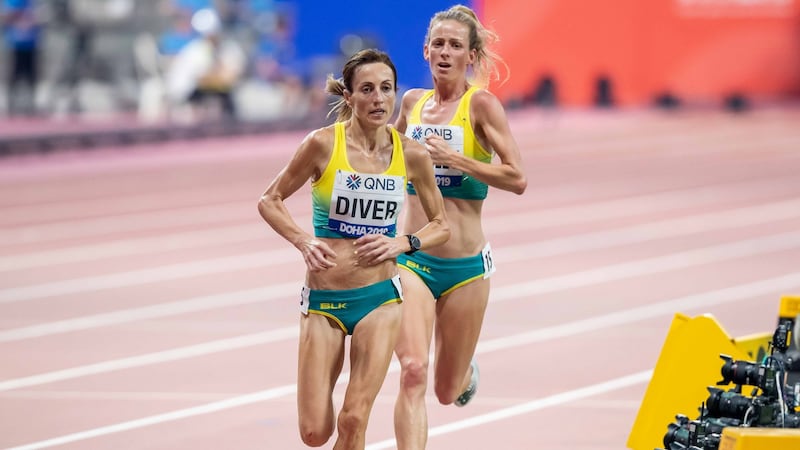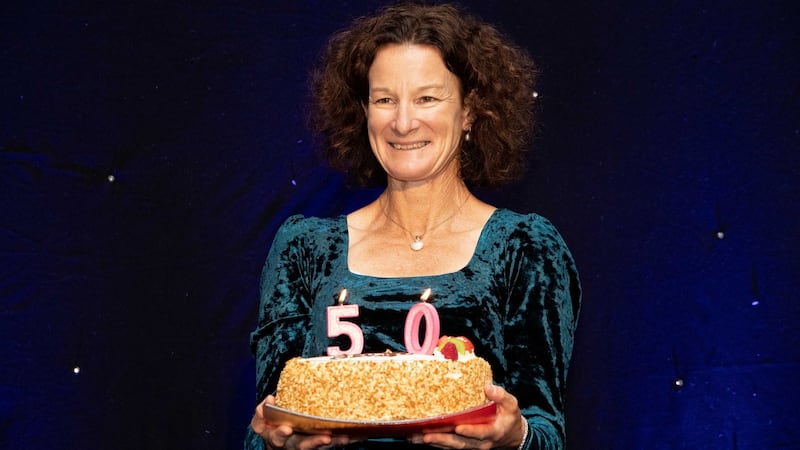Athlete: Sonia O'Sullivan
Location: Deakin University Athletics Track, Waurn Ponds
Date: February 9th 2021
Age: 51
Activity: 4 X 7mins @ Threshold pace
One day earlier this week I drove down to the running track for a training session. There was not a single other person at the track.
It would be easy to ask myself why; I know some people ask me why.
As a result I don’t tell too many people about my weekly love affair with the old red running track. It’s not as if I am running flat out or training for any specific event but I still enjoy running, not jogging, and that means sometimes running fast.
There has to be some purpose to what I am doing to get the enjoyment and satisfaction, and there were many years in the wilderness when I didn’t quite get that. Then a few years ago I stumbled upon an article aimed at the so-called ageing runners, and the thing that stood out was the fear of speed and specific training.
Most runners, as the years go by, fall into the trap: it’s safer just to jog around. When you discover that this is not the case at all a whole new world of running opens up. Suddenly you don’t feel like you are slowing down so much at all.
In fact I feel like I am running better now than I was 10 years ago and enjoying it more. Especially at threshold pace, which is comfortably hard and helps improve running efficiency and endurance.
The thing is many athletes across all sports are not only defined by their ability and success in their sport but also their age. It’s as if there is a sliding scale of good-for-age across different sports, and it doesn’t seem to have evolved over time, even though there are many athletes that defy the traditionally accepted progression and regression in sport as we age.
There is so much evidence out there now to confirm age is not a barrier
There is usually some amazement when we see the younger athlete, who is prodigious, as if we can’t accept their current greatness in that moment. There is an obsession to look ahead to the potential and expectation that can sometimes mean the athlete never quite reaches that potential, never quite gets to celebrate their youthful success.
Then at the other end of the spectrum you, have the athletes who seem to defy age and push the boundaries and limits of the human body.
Poster boy
In the traditional charts we should all be peaking in our mid 20s then entering a sharp decline and exit from sport. At age 43, Tom Brady is the current poster boy for the successful ageing athlete in sports where most athletes seemingly reach their peak and potential in their 20s.
Brady is not a latecomer to sport, has been playing American football throughout his life at high school, college, and now 21 seasons in the NFL, culminating in his seventh Super Bowl Championship on Sunday with the Tampa Bay Buccaneers.

Just recently, while trackside at the Zatopek 10,000m event in Melbourne, the athletes were having their names read out on the start line: they came to Sinead Diver and we were also alerted to her being 41 (not even her correct age), and continually reminded of this as the race went on, until mid-race when Sinead seemed to have aged two years, as we were reminded that the evergreen 43-year old was able to compete with athletes half her age.
Sinead was relaxed enough to comment on the start line; I wonder will everyone else also have their age announced, does it make any difference if the athlete is good enough and has prepared well enough then why do we need to know this statistic? Does it make the performance any greater?
As it is Sinead is in line to compete for Australia at the Tokyo Olympics, so it would be more informative to know that the marathon is her priority. As a mature athlete she also knows the importance of not throwing away the speed tests where the benefit may not be clear in the results beyond her inner circle.
It’s time for the traditionalists to tear up the “rule of thumb”; now more than ever age is just a number, and how we treat our bodies mentally and physically often determines how long we can keep going at such a high level .
There is no age too young to step up either, more evidence coming on Tuesday night with Norway's Jakob Ingebrigtsen, still only 20, crushing a world class 1,500m race in Lieven, France, winning in 3:31.80 by five seconds and moving and up to fifth on the all-time list indoors.
Sometime after that Serena Williams, at 39, was comfortably beating Nina Stojanovic, 15 years her junior, at the Australian Open, to reach the third round for the 19th time, and chasing a 24th Grand Slam singles title. Older sister Venus, now 40, played on through two injuries rather than retire before losing her second round match.
I don’t think age is the detail we need to be discussing but the detail across training, recovery and lifestyle. Elements of this have changed dramatically for professional athletes, especially around diet and smarter training, as well as advancements in shoe technology and better tracks too.

Even with all the physical advancements, I also think with older athletes much of the ability to maintain competitiveness and often get stronger and faster is the mental side of the sport, the motivation to find a way to continue in sport.
Sport is no longer a temporary phase in life. It’s become more of a lifelong career, something to hold onto as long as possible, and to do this there are many areas that can be accessed which athletes didn’t even consider in years gone by.
Recovery
I’m more aware of my diet, sleep, recovery and lifestyle now than I was when competing on the world stage. There is so much more information out there to embrace, not just for elite athletes but also for general health and fitness throughout life.
This is not some fairytale comeback plan, but a means of enjoying sport at a level that is satisfying and purposeful. I don't need to lace up the Nike Dragonfly spikes, just the feeling of being in control of my running gives satisfaction and reward for the input and thought I give to my daily exercise routine.
There is so much evidence out there now to confirm age is not a barrier and those that continue to succeed year after year are usually just more determined, committed and motivated mentally to maintain a high level of physical ability for many more years than we once thought possible.
As Tom Brady says, “it’s not luck but daily habits, hard work and a winning mindset.” Either way good words to live by as you go to bed each night.
















